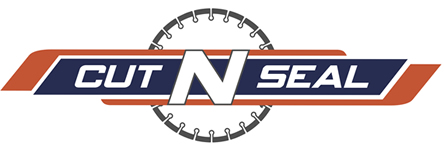Cut n seal specializes in more then just concrete cutting! In addition to cutting concrete walls and cutting joints into concrete slabs, concrete floors and PCC pavements, we also seal joints and/or cracks that are both old and new.
In the world of concrete, cutting joints is performed as it ensures a smoother surface then tooling in joints. A joint is installed in all concrete slabs (floors, pavements, etc.) because all concrete will eventually crack. Therefore, the purpose of these joints is to control cracking. There are three types of joints in concrete slabs: Isolation Joints (often referred to as expansion joints), Construction joints (which can also function as contraction joints), and Contraction joints (also sometimes called control joints).
While controlling the cracking of concrete slabs is important, the need to seal those cracks is equally important. The purpose of joint sealing is to minimize infiltration of surface water and in-compressible material into the joint system. This is known though out the road industry as pavement preservation. Joint sealants are also used to reduce dowel bar corrosion in Concrete Pavement Restoration (CPR) techniques.
Cut n seal does Joint Sealing right! On existing surfaces, successful resealing includes removing old sealant, shaping and cleaning the reservoir (Saw cutting or routing the crack or joint), installing the backer rod and installing the sealant. We blow out any dust, dirt or traces of old sealant that might remain. Thus, ensuring that the reservoir is clean and clear of debris. Specifications typically include a backer rod installation using a double-wheeled, steel roller to insert the rod to the desired depth. Once we insert the backer rod, the sealant is placed into the joint. Various materials could be utilized to seal these joints. However, specifications typically include silicone,polyurethane and polyurea for a shore a hardness of 75.
Harder sealants such as polyureas are typically used inside warehouses to protect the joint aris


